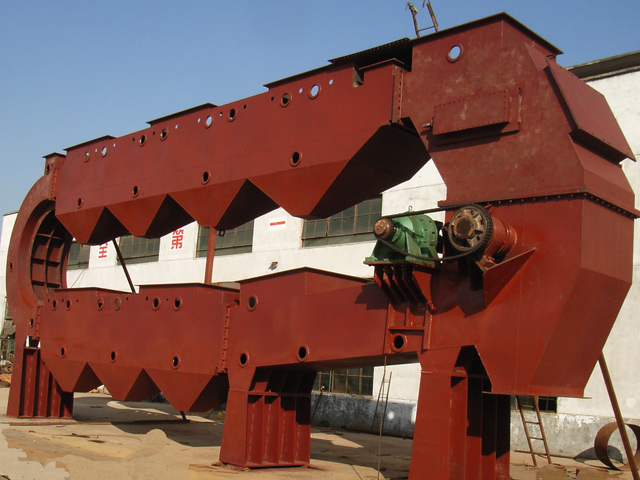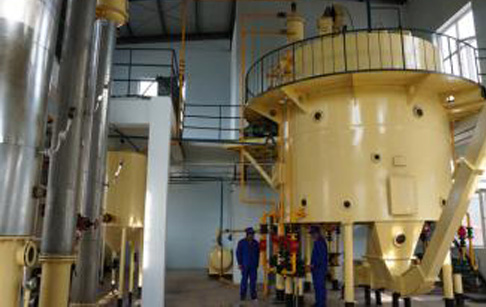The leaching oil process is an edible oil leaching process that uses the principle of extraction and selects a certain organic solvent that can dissolve the oil and makes it come into contact with the pre-treated oil-soaking or spraying, so that the oil in the oil is dissolved . The oil extraction process has the advantages of less residual oil in the meal, high oil yield, low processing cost, good production conditions, high meal quality, and full utilization of oil resources.

The leaching oil process is generally divided into 5 basic processes:
①Pretreatment of oil before leaching;
②Pre-expression leaching or direct leaching;
③The extract (mixed oil) is evaporated, stripped, and desolventized to separate the solvent from the grease;
④The leached material (meal) is evaporated to remove the solvent;
⑤The solvent is recycled and reused.

The process of leaching oil:
1. Extractor
The raw material or pre-pressed cake formed by the pretreatment of the oil is sent to the extractor by the input device, and the concentrated mixed meal and wet meal are obtained after being leached by the solvent.
2. Desolventizing and drying of wet meal
The meal discharged from the extractor contains 25% to 35% of solvent. In order to recover these solvents and obtain better quality meal, heating can be used to evaporate the solvent.
3. Evaporation and stripping of mixed oil
Mixed oil filtration → mixed oil storage tank → first evaporator → second evaporator → stripper → leaching crude oil

The mixed oil (a solution composed of grease and solvent) pumped from the extractor must be treated to separate the grease from the solvent. The separation method is to use the different boiling points of the grease and the solvent. At first, the mixed oil is heated to evaporate, so that most of the solvent is vaporized and separated from the grease. Then, using the difference in volatility between oil and solvent, the concentrated mixed oil is steam distilled (that is, steam stripping), and the residual solvent in the crude oil is distilled out, so as to obtain the leached crude oil with very low solvent content. Before evaporation and steam stripping, the mixed oil must be pretreated to remove the solid meal and colloidal substances in it, creating conditions for the separation of the components of the mixed oil.
4. Solvent vapor
Since the solvent vapor from the first and second evaporators does not contain water, it flows directly into the circulating solvent tank after being cooled by the condenser; the mixed vapor from the stripper and steamer enters the condenser, and the condensed solvent, The water mixture flows into the water separator for water separation, the separated solvent flows into the circulating solvent tank, and the water enters the water sealing tank, and then is discharged into the sewer. If the water discharged from the water separator contains solvent, it enters the cooking tank, after evaporating the trace solvent in the water, the condensate exits through the condenser and enters the water separator, and the waste water enters the water sealing tank.
5. Recovery of solvent in free gas
Air can enter the extractor along with the feed, and enter the entire oil extraction equipment system to mix with solvent vapor. This part of air cannot be condensed into liquid, so it is called "free gas". The long-term accumulation of free gas increases the pressure in the system and affects the smooth progress of production. Therefore, free gas must be discharged from the system in time. However, this part of the air contains a large amount of solvent vapor, and the solvent contained in it needs to be recovered before being discharged. The free gas from the extractor, water distribution tank, mixed oil storage tank, condenser, and solvent circulation tank is all collected in the air balance tank, and then enters the rear condenser. Some oil plants combine the air balance tank and the rear condenser into one. After the solvent contained in the free gas is partially condensed and recovered, there is still uncondensed gas, which still contains a small amount of solvent, and should be recovered as much as possible before the exhaust gas is emptied.
Copyright © Henan Zhongxing Grain And Oil Machinery Co.,Ltd. All Rights Reserved. Powered by MetInfo